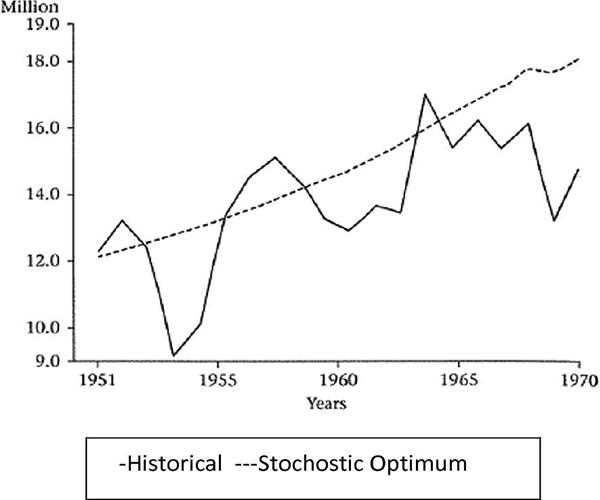The Mahalanobis model is associated with the Second Five year plan in India when it was created by Soviet economist Grigory Feldman in 1928 and Indian statistician Prasanta Chandra Mahalanobis in 1953. Mr. Mahalanobis was the central economist during India’s Second Five-year plan, and he created this economic model. While Feldman provides numerical methods, Mahalanobis provides a closed-form algebraic method to arrive at the same solution of the optimal allocation of investible funds.
When the framework of India’s Second Five-Year Plan was devised then this model provided analytical base to it. Mahalanobis introduced his two-sector model, which he later expanded into the four-sector version.
The assumptions under which the Mahalanobis model is posited are as follows:
• We assume a closed economy.
• The economy consists of two sectors: consumption goods sector C and capital goods sector K.
• Capital goods are non-shiftable.
• Full capacity production.
• Investment is determined by supply of capital goods.
• No changes in prices.
• Capital is the only scarce factor.
• Production of capital goods is independent of the production of consumer goods.
The model states that there is a shift in the pattern of industrial investment towards building up a domestic consumption goods sector.
Thus, the strategy suggests in order to reach a high standard in consumption, investment in infrastructure is firstly needed. A high enough capacity in the capital goods sector expands in the long-run the nation's consumer-goods production capacity.

Practical of putting into Second Five-Year Plan:
It was put into practice in 1956 in India’s Second Five Year plan but there were many problems associated with it such as
• Unexpected and unavoidable costs contributing to increased money supply and growing inflation.
• fall in the foreign exchange reserve due to liberalised import policy and international tension, leading to modifications in the Second Plan in 1958.